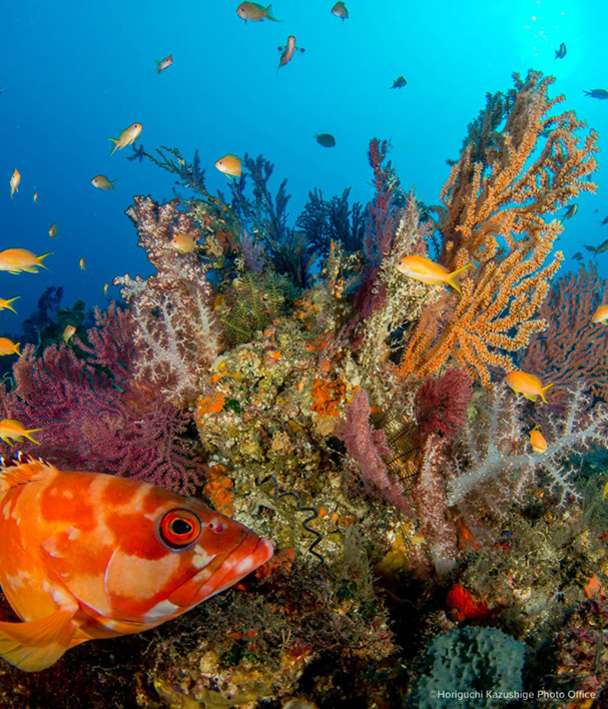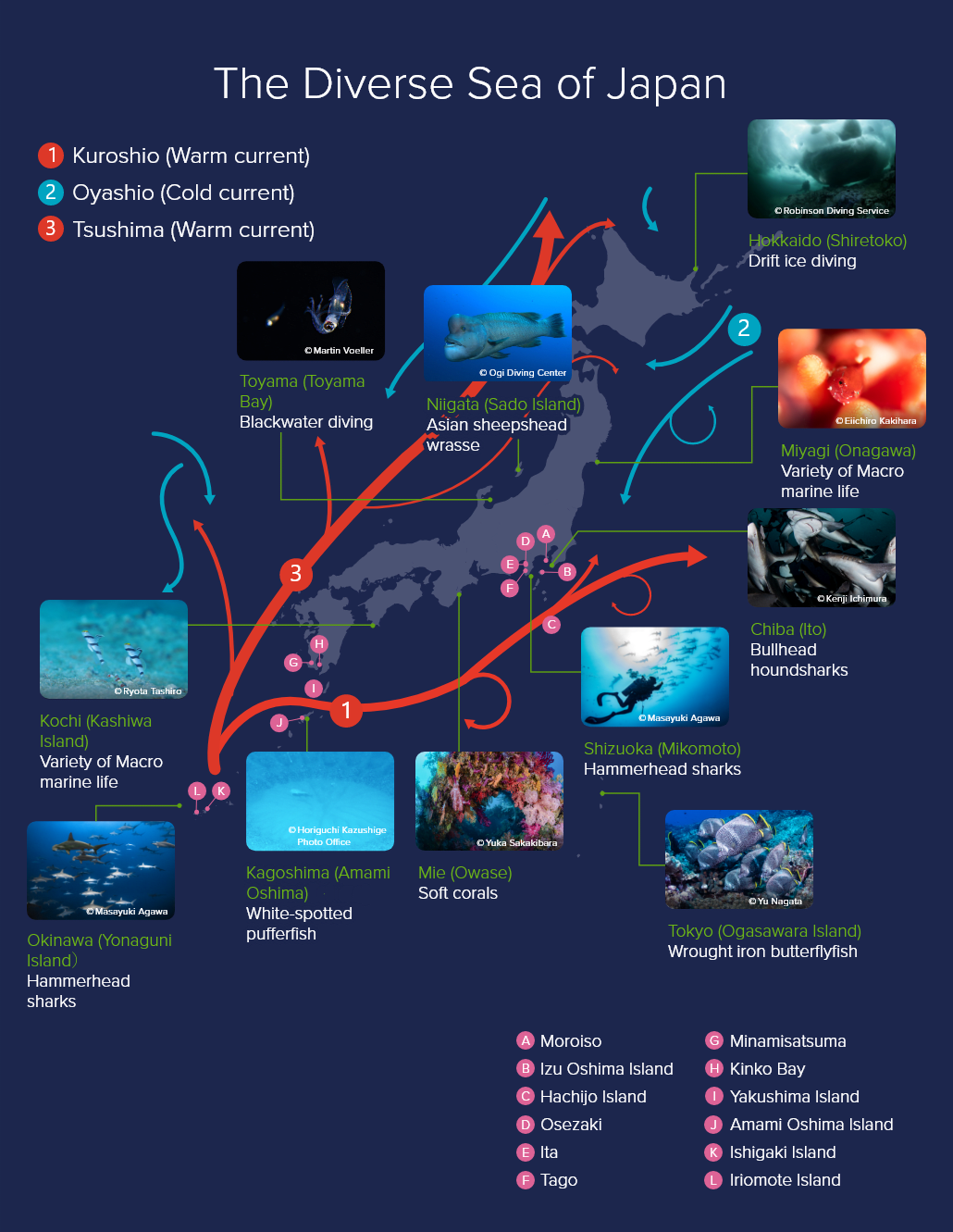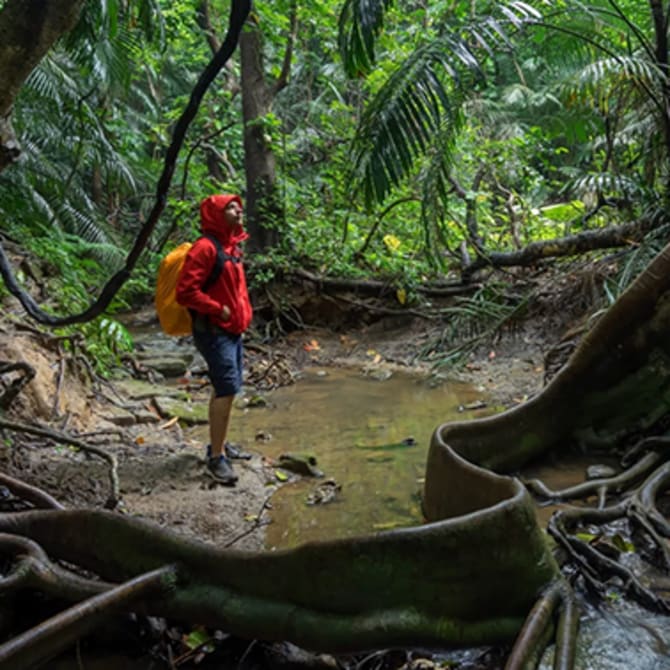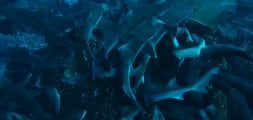Expansive coastlines
An island nation stretching over 3,000 kilometers (1,900 miles) along East Asia's Pacific coast, Japan’s diverse marine environments create a vibrant underwater paradise that shouldn’t be missed.
Among a total of 6,852 islands, the four main islands are Hokkaido, Honshu, Shikoku, and Kyushu. The Ryukyu Islands and Nanpo Islands are located south of Kyushu. Due to Japan's long coastlines, the country boasts extensive marine resources.
Where warm and cold water marine life thrive
The Oyashio ("Parental Tide") is a cold subarctic ocean current that flows southward and circulates counterclockwise along the east coast of Hokkaido and northeastern Honshu. This nutrient rich current collides with the Kuroshio ("Black Tide") Current with the warm current from the south, off the eastern shore of Japan to form the North Pacific Current.
The nutrient-rich Oyashio is named for its metaphorical role as the parent that provides for and nurtures marine organisms.

Coastal upwelling reveals deep-sea creatures
Japan is also a place where you can encounter creatures that are rarely seen in the world thanks to the unique underwater land terrain that causes the “coastal upwelling” from the deep sea.

A biodiversity hotspot
A total of 33,629 species have been reported to occur around Japan. While constituting a mere 0.9 percent of the global ocean volume, Japanese waters encompass 14.6 percent of all 230,000 marine species found worldwide.

































































